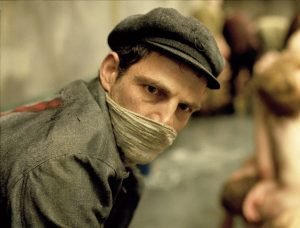Silent but Powerful: Exploring the Haunting Aesthetics of ‘The Look of Silence’
If you’re a fan of documentaries that are both visually stunning and emotionally gripping, you won’t want to miss “The Look of Silence.” This powerful film explores the haunting legacy of the Indonesian genocide, and its director, Joshua Oppenheimer, has once again delivered a masterpiece that is sure to leave audiences stunned. In this article, we’ll take a closer look at the haunting aesthetics of “The Look of Silence,” and explore how Oppenheimer has crafted a film that is both visually and emotionally powerful.
If you’re a fan of documentaries that are both visually stunning and emotionally gripping, you won’t want to miss “The Look of Silence.” This powerful film explores the haunting legacy of the Indonesian genocide, and its director, Joshua Oppenheimer, has once again delivered a masterpiece that is sure to leave audiences stunned. In this article, we’ll take a closer look at the haunting aesthetics of “The Look of Silence,” and explore how Oppenheimer has crafted a film that is both visually and emotionally powerful.

Introduction
In today’s post about cinema, movies, and actors, we will take a closer look at the haunting aesthetics of “The Look of Silence”. This documentary film directed by Joshua Oppenheimer explores the Indonesian genocide of 1965 through the eyes of an optometrist whose brother was killed during the massacre. Through chilling interviews and stunning visuals, the film provides a poignant commentary on the lasting effects of violence and the importance of accountability. So, grab your popcorn and settle in as we delve into the eerie and unforgettable world of “The Look of Silence”.
Use of silence
In cinema, silence can be a powerful tool for storytelling. “The Look of Silence” employs silence to create a haunting and deeply emotional atmosphere. The film uses long pauses and quiet moments to allow the audience to ponder the gravity of the situation and the impact of the atrocities committed during the Indonesian genocide. The use of silence in this film is effective in conveying the sense of loss and the weight of the past. It is a reminder that sometimes, the most powerful messages can be conveyed through a simple, yet impactful, absence of sound.
Cinematography
Cinematography is an essential element of film-making that can either make or break a movie. In “The Look of Silence,” the cinematography plays a crucial role in creating a haunting and disturbing atmosphere. Director Joshua Oppenheimer and his team used various techniques to capture the emotional journey of the film’s protagonist as he seeks the truth behind his brother’s murder. The use of close-ups, wide shots, and slow-motion sequences helps to create a visual language that enhances the emotional impact of the film. The result is a visually stunning and emotionally charged film that leaves a lasting impression on the audience.

Symbolism
Symbolism is an essential aspect of the visual language of cinema. It is the art of representing ideas, emotions, and concepts through images and visual elements. In the movie “The Look of Silence,” symbolism takes on a haunting and powerful role in the film’s aesthetics. The use of visuals like water, mirrors, and shadows are symbolic of memory and the search for truth. These symbols are woven seamlessly into the narrative, creating a thought-provoking and emotionally charged viewing experience. The use of symbolism in this film is a testament to the power of cinema to transcend language and culture and communicate on a deeply human level.
Sound design
Sound design is an essential element in creating the haunting aesthetics of films like “The Look of Silence”. It helps to create the atmosphere, emotion, and tone of a film. The use of sound effects and music can amplify the impact of a particular scene or even an entire movie. In “The Look of Silence”, the sound design is particularly effective in creating a sense of unease and tension that accompanies the story of a man seeking answers about his brother’s death during the Indonesian genocide. The sound design enhances the film’s emotional impact and draws the audience deeper into the story.
Lighting
In “The Look of Silence,” the haunting aesthetics are largely due to the film’s use of lighting. The filmmakers expertly crafted a somber and eerie atmosphere through their use of shadows and dim lighting. This approach creates a sense of unease and tension throughout the film, perfectly matching the heavy subject matter. Additionally, the lighting serves to highlight the emotions and expressions of the film’s subjects, emphasizing their pain and grief. Overall, the use of lighting in “The Look of Silence” is an essential element in creating its powerful and impactful visuals.

Editing
Editing is a crucial aspect of filmmaking that can make or break a film’s success. In “The Look of Silence,” the editing plays a significant role in creating the haunting and evocative atmosphere of the film. Through the use of quick cuts and juxtapositions, the editor is able to convey the emotional turmoil of the characters and the weight of the film’s themes. Additionally, the precise and deliberate pacing of the film’s editing builds tension and suspense, drawing the audience further into the story. Overall, the editing in “The Look of Silence” is a masterful example of how the technical aspects of filmmaking can enhance and elevate a powerful story.
Setting
The setting is a crucial element when it comes to creating a powerful cinematic experience. In “The Look of Silence,” director Joshua Oppenheimer utilizes haunting aesthetics to transport the audience to a small Indonesian village where the mass killings of 1965 took place. The film’s use of stark, desolate landscapes and intimate shots of the villagers’ faces creates a palpable sense of tension and unease. The setting plays a significant role in creating a mood that lingers long after the credits have rolled. It serves as a reminder that location isn’t just a backdrop, but a critical component in crafting a compelling film.
Costume and makeup
One of the most striking elements in “The Look of Silence” is its haunting aesthetics, which is largely due to the film’s effective use of costume and makeup. The film’s protagonist, Adi, is dressed in plain, unassuming clothing throughout the film, which contrasts with the elaborate and colorful clothing of the perpetrators he confronts. Additionally, the film’s use of makeup is subtle but impactful; the aging and weathering effects on Adi’s face serve to reinforce the weight of the traumatic events that he is investigating. Overall, the use of costume and makeup in “The Look of Silence” contributes to the film’s powerful and haunting visual style.
Conclusion
In conclusion, “The Look of Silence” haunting aesthetics is a powerful and deeply moving documentary film that explores the aftermath of the Indonesian genocide. The use of stunning cinematography, haunting music, and heart-wrenching interviews with survivors and perpetrators make this film an unforgettable experience. This documentary not only sheds light on a tragic event in history but also highlights the importance of confronting the past and seeking justice. Overall, “The Look of Silence” is a must-watch for anyone interested in cinema, movies, and actors who want to witness the power of storytelling through film.
For more information about The Look of Silence haunting aesthetics, including movie details, cast information, etc..
check out the filmaffinity page.



